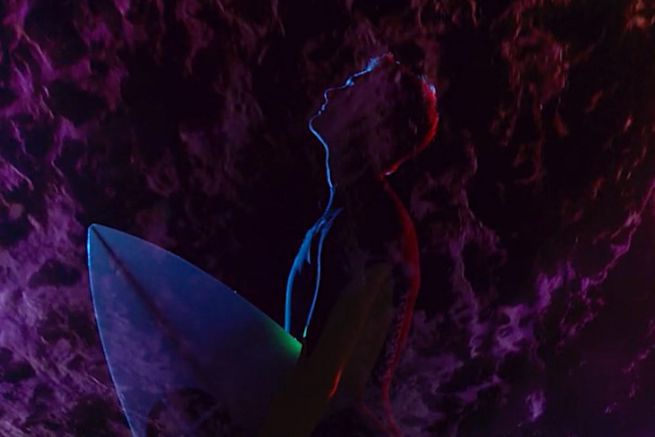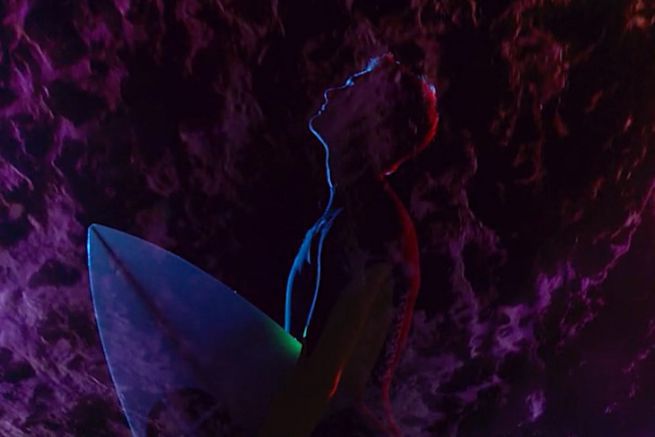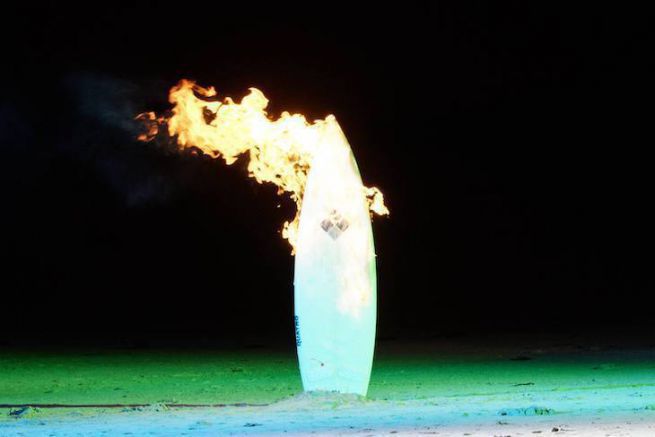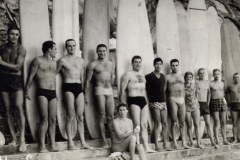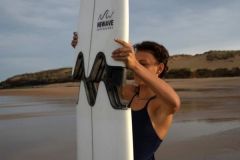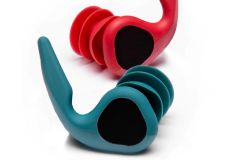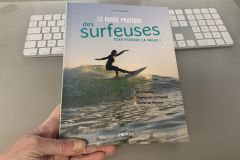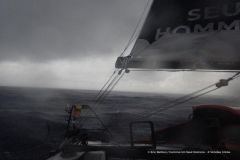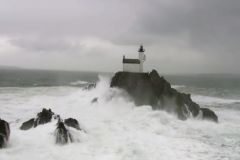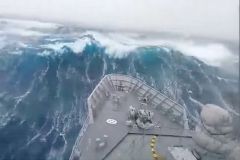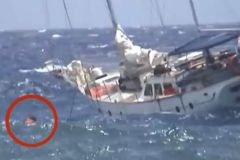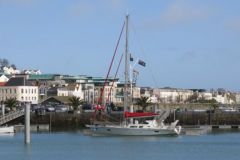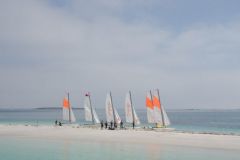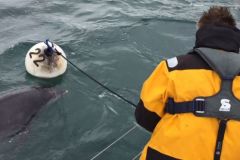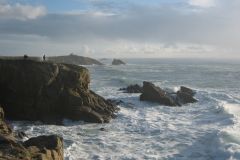How did you get the idea to make this film?
I do a bit of surfing, but I don't have the level of Gaspard (Editor's note: Larsonneur) and Ian (NDRL: Fontaine), the two pro surfers in the film. Basically, I do a lot of skiing, so I have a big ski film culture. But I find it difficult to make a film about this sport, because I've already seen so many things, that I risk taking up some ideas that I've already exploited. I decided to go surfing instead.
Surfing is something new to me. I thought it was interesting to make a film with this completely virgin look. I know all the camera axes you can use in skiing and it's exciting to make a surf film without necessarily knowing how to do it, without necessarily having the technique. It's a new side to it, which I really like.
There is a ski film - Afteglow - directed by Sweetgrass Productions which uses this technique of light projection and which I thought was splendid. 4,000 watt projectors illuminate the mountain with coloured gelatines and the rendering is superb. I wanted to do the same thing on the water except that the light reflects much more easily on the snow because it is white. Doing the same thing with the same spotlights on the water was not possible. You needed a huge light source.
The idea was not to make another surfing video, but to take the world of surfing and instill an aestheticism in it to try to create a mystical environment.
How was this film a technical challenge?
I came up with the idea a little over a year ago. It was a real technical challenge above all and above all a big financial challenge, for which we didn't have the means. This film requires very high-performance equipment - bringing 100,000 watts to the water's edge - with a generator (a 30-ton truck) and projectors that are each 12,000 watts. Through friends working in the film industry, we were able to make good contacts with rental companies. So we started with WAG Productions.
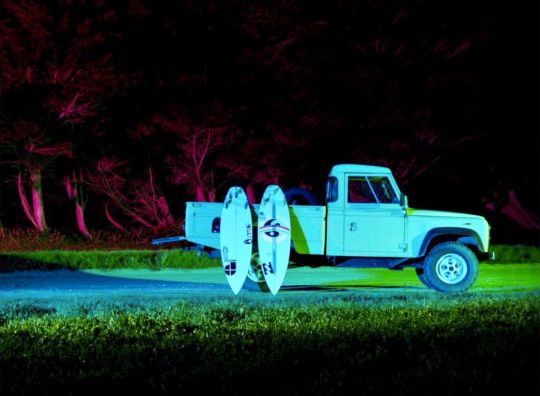
What was the organization?
We worked in a small team of about ten technicians over four days of shooting. Before that, there were 3 months of preparation. The whole challenge of the film was to light up, and the four projectors weigh more than 200 kilos each. Not easy to move!
We also had to coordinate with the weather conditions whether there were waves... We shot from November 2 to 5, but with only one night of surfing session, from 1:30 to 5:30. The other 3 days were dedicated to lifestyle. The first night we prepared ourselves and the other days we shot the intro on the wild coast (Quiberon) and on various beaches we had spotted.
When we selected the spot for The Torch, we didn't know anyone there. And it was through friends of friends that I met the two surfers in the film. They're great and relaxed guys, but very professional. That went really well!
We shot this film in a very professional way with technicians, etc., but it's above all a buddy film, with a good atmosphere. The producers of Wag are buddies, we're all between 25 and 30 years old..
This shooting, it's 4 days where we don't really sleep! But we had a lot of fun doing it! The guys (NDRL: the surfers) went into the water in a mythical spot with colors on the water that were reflected on the foam and that gave the impression of colored pearls.
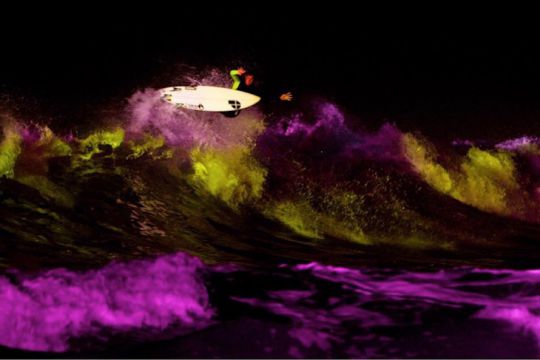
Why did you choose the spot for The Torch?
The configuration is perfect for filming: a rocky overhang to install a first axis of light, the beach to install the second projector and a straight wave to reflect the light and film the surfers face camera. In total, there were 3 cameras, one on the rocky headland, one close to the beach and one aerial (drone).
La Torche is also a mythical spot in Brittany, whose name I liked very much. In this film, I wanted to include a narrative and cinematographic dimension. By doing, burning a surfboard, I was referring to the name, but I also gave a religious and mystical dimension to the film. Indeed, in Australia it is customary to burn a board to make an offering to Huey, the mythological figure who creates the waves.
Did everything go as planned?
On the set we scared each other, several times. In the preparation, we had made calculations on the penetration in the water, the surfers, the distance, the gelatines (coloured discs that we placed in front of the projectors), the sensitivity of the camera... For me on paper, everything was rolling, but we didn't have the means to make a real test. When the projectors were switched on, it was double or nothing! But we were lucky!
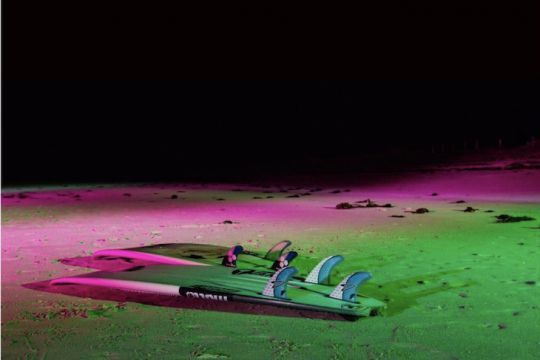
What is the purpose of this film?
It's a pure showcase film! We made it and sent it to the press to show what we could do in extreme conditions. It cost us 10,000 euros, we cut the budget in half (5,000 euros each between Hugo Manhes and Wag Production) and considering the material used, it could have cost us a lot more!
Eventually, I'd like to shoot for brands in the world of snow sports. I'd love to shoot something on the wave of Belharra (Basque Country) and Nazaré (Portugal) and it's something that's in progress.
What's your background?
I started in film as a camera assistant in the series No Limit (produced by Luc Besson) and afterwards I managed the post-production of director Quentin Dupieux and started directing. I first started working for the Wag (production) before starting my own. Together, we shoot commercials and personal projects (films to fiction shorts). The Torch is my first personal project.
